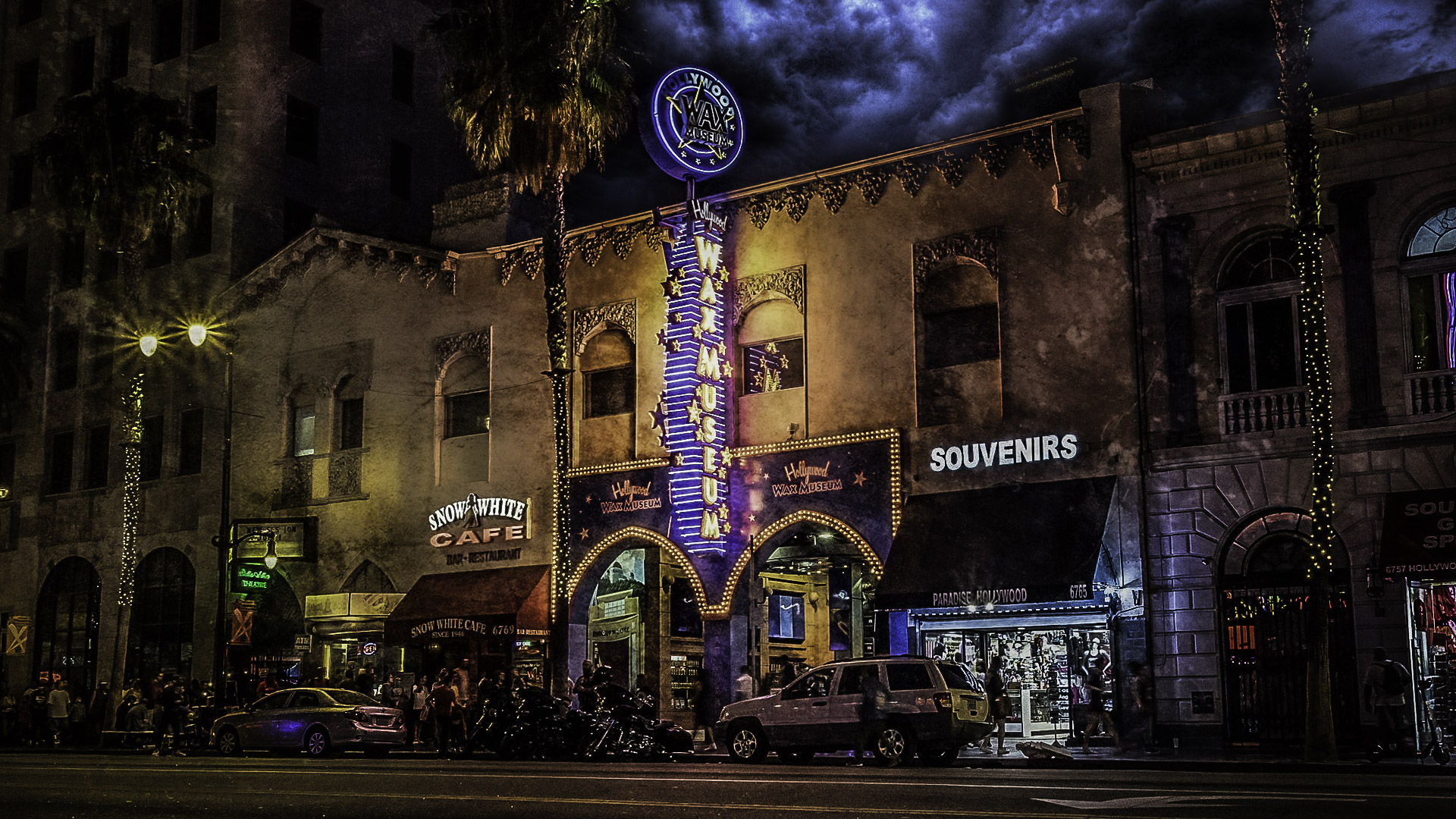
The Hollywood Wax Museum is right down the street from the glamor of the Hollywood Roosevelt. Laying in between the star-studded Hollywood Walk of Fame, this tourist destination has been attracting visitors since its opening in 1965.
But behind the chillingly accurate wax figurines, depicting anyone from Michael Jackson to Dale Earnhart is something far more devious. Spirits haunt the old Wax Museum. They have been captured on video and reported by numerous visitors!
Quick Facts:
A visit to the Hollywood Wax Museum is a necessary part of any visit to the Hollywood area. Tickets range from $29.99 to $34.99 for adults and $19.99 for children between the ages of 4 and 11. Children under three gain entry for free, and it is fun for the whole family! Take pictures with life-like wax versions of your favorite celebrities; Samuel L. Jackson, Leonardo DiCaprio, Lucille Ball, Michael Jackson, and many more are all recreated for the whole family.
Madame Tussauds, the first major Wax museum in the world, opened in London in 1835. Stunningly realistic wax figurines of famous monarchs greeted visitors to the little shop on Baker Street. It has since become an odd yet popular tradition to visit a wax museum.
There are now Madame Tussauds all over the Western world, with major Los Angeles locations right down the street from the Hollywood Wax Museum— New York, Orlando, Las Vegas, San Francisco, Nashville, and London.
The story behind these curiosities is rather macabre and well worth visiting. Marie Tussaud was born in Strasbourg, France on Dec 1st, 1761. She learned her unique skill from a man named Phillipe Curtius while in Paris. Curtius was a local doctor and owner of two wax museums. Tussaud’s mother was employed as a housekeeper, and the skill was passed down to the youngest Tussaud.
As is the case with any other artist, Tussaud started small, crafting hearts and other anatomical objects. She created her first full likeness in 1777 of the philosopher Voltaire. Other statues curated during this time were of Benjamin Franklin and Jean-Jacques Rousseau.
By the time the French Revolution rolled around, Tussaud had been employed by public enemy #1, King Louis XVI. Her head was shaved and prepared for the guillotine, but a friend of her mentor Curtius saved her before the big chop.
However, she was instructed to create death masks and figurines of the now-headless monarchy. The revolutionaries got their spoils, and Tussaud was eventually set free.
In 1802 Tussaud brought her sculpting skills to London and embarked on a three-decades-long tour of England. She opened the now-infamous Wax Museum on Baker Street in 1835 and died in 1850. Her last statue was a life-like statue of herself!
The Hollywood Wax Museum was the brainchild of Sapuran Singh Sunder (Spoony). He envisioned a wax museum similar to Madame Tussauds, but less Monarchial and more American. Celebrities became his main subjects! Since 1964 he has been filling the hearts and minds of visitors to Hollywood with recreations of everyone’s favorite celebrities.
Along with celebrities, there is a “Chamber of Horrors” section. Here guests can view their favorite movie monsters, both old and new, up close and personal. The popularity of the Hollywood Wax Museum, the most visited indoor activity in Hollywood, led to its expansion into other states; Missouri, Tennessee, and South Carolina.
While the statues of celebrities from then and now may bring about the onset of the “uncanny valley effect,” they are harmless. But many have left the museum unsure of what they are seeing.
Reports vary, but the museum seems to have some strong spiritual activity. Orbs often appear in videos where no dust, light, or bug should have been. They fly around security cameras in no pattern and confuse nighttime visitors.
Strange colors, shapes, and images have shown up in photographs taken by those visiting at night.
One man from the National Enquirer heard of the odd activity happening at the odd museum. He locked himself in for the night in order to better investigate the situation. While no one is certain as to what exactly he saw, they say he came out of the building in the morning white as a ghost and horrified.
The Hollywood Wax Museum is only one haunted stop among many in Los Angeles. The city of Angels holds many secrets and spirits not seen by the naked eye. Trust us at US Ghost Adventures to take you to the most haunted locations on one of our many ghost tours!
If you’d like to discover more of haunted Los Angeles from home, please check out our blog and follow us on Facebook, Instagram, and Tik Tok.
Sources:
https://www.cbsnews.com/losangeles/news/los-angeles-most-haunted-places/
https://www.hollywoodwaxentertainment.com/hollywood-ca-attractions/hollywood-wax-museum/
https://latourist.com/index.php?page=haunted-hollywood-story
https://www.urbstravel.com/post/history-of-madame-tussauds
https://www.britannica.com/biography/Marie-Tussaud
https://sbfdoc.org/highlights/2021/10/18/hollywood-wax-museum